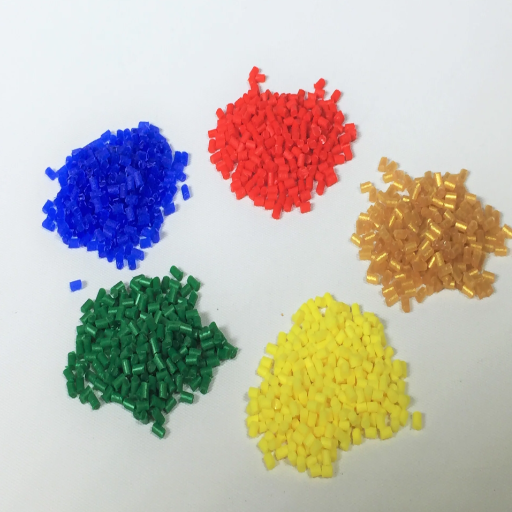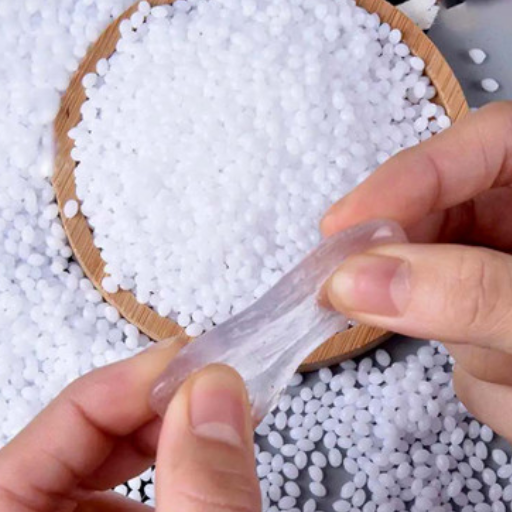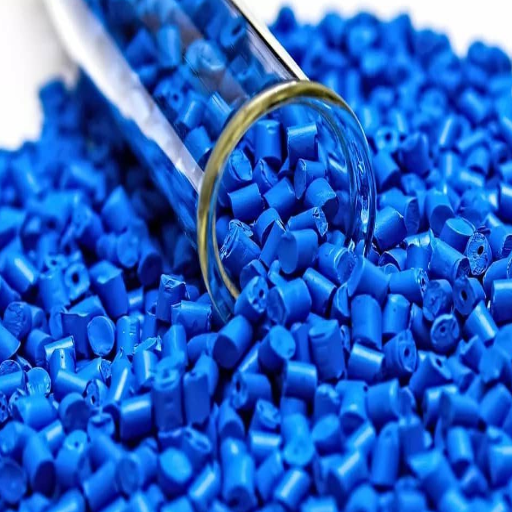The growing emphasis on sustainability and reducing environmental impact has placed recycled plastic pellets at the forefront of innovative solutions in the manufacturing industry. These pellets, created from post-consumer and industrial plastic waste, have revolutionized the way materials are reused, offering incredible potential to minimize landfill waste, lower raw material costs, and reduce carbon emissions.
This blog post explores the comprehensive process of creating recycled plastic pellets, highlights their diverse applications, and examines the environmental and economic advantages they bring to the table. By understanding the production process, from collection and sorting to reprocessing, we can shed light on how these pellets support a circular economy. Additionally, we’ll discuss the evolving technologies, market trends, and challenges faced in making this practice both efficient and widespread.
What are recycled plastic pellets and how are they made?
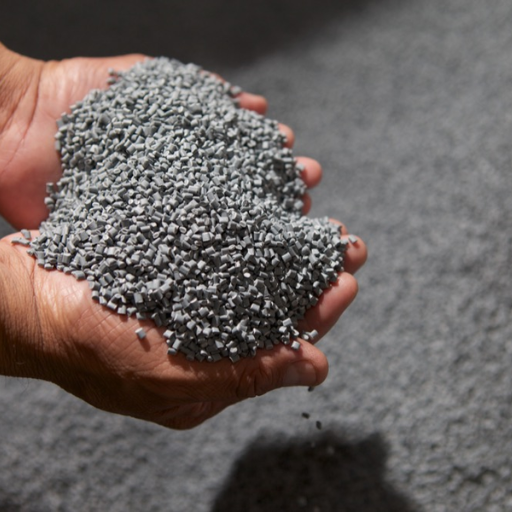
Recycled plastic pellets are small granules made from discarded plastic materials that have been processed for reuse. These pellets serve as raw materials in manufacturing, replacing the need for virgin plastics and reducing environmental impact. The production process begins with the collection of plastic waste, which is then sorted by type and quality. Once sorted, the plastic is cleaned, shredded, and melted down. The molten plastic is then extruded into thin strands, which are cooled and cut into uniform pellets. This streamlined process ensures that the recycled plastic is ready for various applications in industries like packaging, construction, and textiles.
Understanding the recycling process for plastic waste
Recycling plastic waste is crucial to the modern world as it helps to conserve the environment and helps in saving resources. Recycling helps to protect the environment as it reduces the amount of plastic waste that is thrown into landfills and the ocean. It also helps to reduce the greenhouse gas emissions as less energy is used in creating new plastics out of raw materials. Since new materials are not required, less fossil fuels are used. By incorporating recycled plastics polymers into packaging, textiles, and construction materials, industries contribute toward sustainable “circular” economy while tackling global waste problems.
From plastic products to raw material: The transformation journey
The transformation of plastic products into raw materials begins with collection and sorting. Post-consumer plastics are gathered from recycling bins, municipal waste systems, or commercial facilities, and sorted by type and resin code. This step ensures materials are grouped correctly to maintain the quality of reprocessed plastics.
Next, the sorted plastics undergo a cleaning process to remove any contaminants, such as labels, adhesives, and residues. Once cleaned, the materials are shredded or crushed into smaller pieces, making them more manageable for the subsequent steps. These pieces are then melted and reformed into pellets or granules, which serve as raw materials for manufacturing new products.
Advanced recycling methods, such as chemical recycling, go a step further by breaking down plastics into their molecular components. This process allows for the creation of high-quality materials that are almost identical to virgin plastics. Through these techniques, plastic waste is given a new life, enabling industries to reduce dependency on non-renewable resources while mitigating environmental pollution.
Types of recycled plastic pellets: HDPE, PP, LDPE, and more
Recycled plastic pellets are classified based on the type of plastic material they originate from, offering diverse applications across industries.
HDPE (High-Density Polyethylene): Known for its strength and durability, HDPE pellets are widely used in manufacturing products like pipes, containers, and outdoor furniture. They are resistant to UV rays and chemicals, making them ideal for heavy-duty applications.
PP (Polypropylene): PP pellets are valued for their lightweight and robust characteristics. These are commonly utilized in automotive parts, packaging materials, and textiles due to their resistance to heat and impact.
LDPE (Low-Density Polyethylene): LDPE pellets are flexible and lightweight, typically used for producing items like plastic bags, shrink wraps, and squeeze bottles. Their malleability makes them a favorite in the packaging industry.
Additional recycled plastic materials include PET (used in bottles and food packaging), PVC (used in pipes and flooring), and PS (used for insulation and packaging foam). These pellets enable sustainable advancements by reintroducing plastic waste into the production cycle, reducing environmental impact and promoting a circular economy.
How do recycled plastic pellets compare to virgin plastic resin?
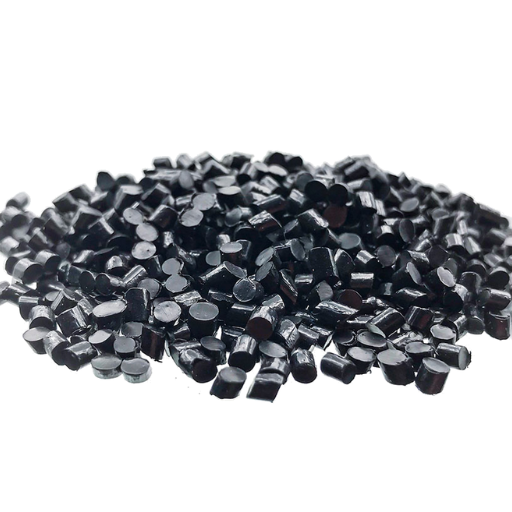
Recycled plastic pellets and virgin plastic resin have distinct differences in terms of cost, quality, and environmental impact. Recycled pellets are generally more affordable, as they are produced from repurposed materials, while virgin plastic resin tends to be more expensive due to higher raw material and production costs. When it comes to quality, virgin resin typically offers superior consistency and strength, which makes it ideal for applications requiring strict performance standards. However, recycled pellets contribute significantly to sustainability by reducing plastic waste and conserving resources, making them the preferred choice for eco-conscious industries and products where high precision is not critical.
Quality differences between recycled and virgin plastic
The primary differences between recycled and virgin plastic revolve around consistency, durability, and application suitability. Virgin plastic is made from newly extracted petrochemicals, offering unmatched uniformity, strength, and cleanliness, making it essential for industries like medical devices, food packaging, and automotive manufacturing where reliability and regulatory compliance are crucial. Recycled plastic, on the other hand, can vary in quality depending on the source and processing methods. It may exhibit lower tensile strength and slight impurities, limiting its use to non-critical applications like packaging, construction materials, or textiles. However, advances in recycling technologies have significantly improved the quality of recycled plastics, narrowing the gap to virgin plastic performance in many cases. While virgin plastic delivers superior performance and consistency, recycled plastic excels in environmental sustainability, reducing waste and carbon footprints.
Cost-effectiveness of using recycled plastic pellets
Using recycled plastic pellets is highly cost-effective for businesses aiming to balance performance with sustainability. Recycled pellets are generally cheaper than virgin plastic, reducing raw material expenses, especially for industries with high-volume production. Additionally, they can help companies lower waste management costs and comply with environmental regulations, potentially avoiding fines or penalties. Advances in recycling technology have enhanced the consistency and durability of recycled pellets, making them suitable for a wider range of applications while delivering significant cost savings. By incorporating recycled materials, businesses can also improve their marketability, as consumers increasingly favor eco-conscious brands, creating a competitive edge in the marketplace.
Environmental benefits of choosing recycled over virgin plastic
Choosing recycled plastic over virgin plastic significantly reduces environmental impact. Firstly, recycled plastic requires less energy and fewer resources during production, lowering greenhouse gas emissions and conserving fossil fuels. By reusing existing materials, it minimizes the need for extracting raw resources, which often leads to habitat destruction and biodiversity loss. Additionally, promoting recycled plastic helps divert waste from landfills and oceans, combating the growing problem of plastic pollution. Recycling also supports a circular economy, where materials are continuously repurposed, fostering sustainability and reducing environmental degradation. Together, these benefits make recycled plastic a vital choice for mitigating climate change and protecting ecosystems.
What industries can benefit from using recycled plastic pellets?
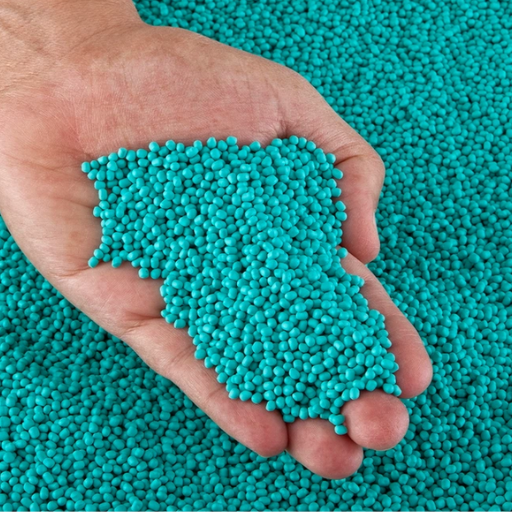
Recycled plastic pellets have versatile applications, making them valuable across various industries. The manufacturing sector benefits by using these pellets in the production of containers, packaging materials, and household goods, which lowers raw material costs and reduces environmental impact. The construction industry employs recycled plastics in items such as pipes, insulation materials, and composite lumber, contributing to eco-friendly building practices. Additionally, the automotive sector utilizes recycled plastic for interior components like dashboards and upholstery, aligning with sustainability goals. Even the textile industry integrates recycled plastic pellets into fibers for garments and accessories, promoting circular fashion. These diverse applications demonstrate the capability of recycled plastic pellets to drive innovation and sustainability across multiple fields.
Automotive applications for recycled plastic granules
Recycled plastic granules are increasingly being utilized in the automotive industry to reduce environmental impact while maintaining performance standards. These materials are commonly used in the production of car interiors such as dashboards, door panels, and seat fabrics. They offer high durability and lighter weight, contributing to improved fuel efficiency. Exterior components like bumpers, fenders, and underbody shields also benefit from the integration of recycled plastics, ensuring structural integrity and cost-effectiveness. Beyond aesthetic and structural uses, recycled plastic granules support advanced manufacturing processes, aligning with the industry’s push for greener and more sustainable practices. This transformation highlights a shift toward circular manufacturing models in automotive production, reducing dependency on virgin materials and lowering carbon footprints.
Plastic lumber production using recycled pellets
Plastic lumber production has emerged as a pivotal application for recycled plastic pellets, offering a durable, sustainable alternative to traditional wood. This process involves melting and molding recycled plastic granules into various lumber shapes, mimicking the functionality and appearance of wood while being resistant to rot, pests, and moisture. Due to its longevity and low maintenance, plastic lumber is widely used in decking, landscaping, fencing, and outdoor furniture.
The environmental advantages of this method are substantial. By diverting plastic waste from landfills and waterways, this practice actively reduces pollution and promotes a circular economy. Additionally, plastic lumber production requires less energy compared to virgin plastic manufacturing, thereby lowering greenhouse gas emissions. With advances in recycling technology, the quality and strength of plastic lumber continue to improve, making it a cost-effective and eco-friendly choice for construction and design.
Consumer goods manufacturing with recycled plastic materials
The supporting of plastics innovation while ensuring environmental protection has gone to a completely new level as recycled plastics are being used in the making of clothing, furniture, kitchenware, and even in sneakers. For instance, rPET bottles can now be recycled into PET fibers that can then be weaved into clothing. Recycled HDPE also has its uses as it can be converted into durable shampoo bottles as well as other stubbornly-resistant packaged goods.
As businesses try to keep up with modern-day expectations of consumers, they are realizing how beneficial using recycled goods can be to their brand identity and market reputation. With sustainable practices becoming common in many businesses, de-risking from using virgin plastics also cuts down the energy and resource requirements that go into the manufacturing processes. With rPET garments and HDPE shampoos on the shelf, it becomes apparent that recycling technologies have advanced well enough to make plastic waste versatile, adjustable, and usable without harming the environment.
How to choose the right recycled plastic pellets for your needs?
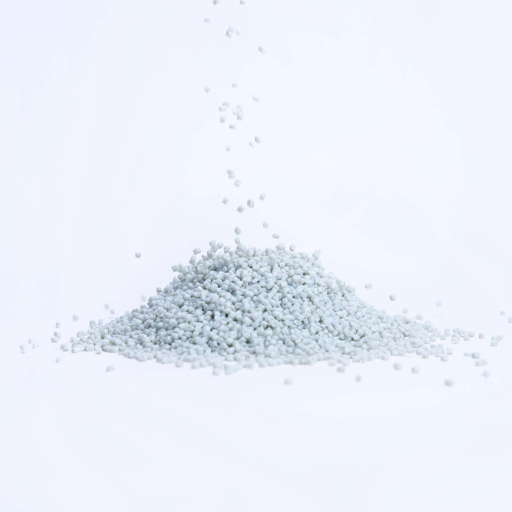
When selecting the right recycled plastic pellets for your needs, start by considering the specific application and performance requirements of your product. Assess factors such as strength, flexibility, and resistance to environmental conditions to ensure the pellets meet your functional criteria. Next, evaluate the type of plastic resin, as different resins (e.g., PET, HDPE, PP) are suited to various applications. Additionally, verify the quality and consistency of the pellets by reviewing certification standards and supplier testing reports. Partnering with a reputable supplier who adheres to stringent recycling and quality control processes is critical for reliable sourcing. Finally, prioritize pellets with the lowest environmental impact while aligning with your sustainability goals.
Understanding different polymer types and their properties
Polymers are versatile materials divided into two main categories based on their structural and thermal characteristics—thermoplastics and thermosetting plastics. Thermoplastics, such as polyethylene (PE), polypropylene (PP), and polyvinyl chloride (PVC), soften when heated and harden upon cooling, making them easily recyclable and widely used in automotive, packaging, and medical industries. On the other hand, thermosetting plastics, like epoxy, phenolic, and polyurethane, cure into a rigid state and cannot be re-melted, offering exceptional durability and resistance to heat and chemicals, ideal for applications in electronics and construction.
Additionally, polymers display a variety of mechanical and chemical properties depending on their molecular structure. For instance, amorphous polymers like polystyrene (PS) have a random molecular arrangement, granting clarity and ease of processing but lower mechanical strength. Conversely, semi-crystalline polymers such as polyethylene terephthalate (PET) exhibit ordered regions that enhance tensile strength and chemical resistance.
Understanding the properties of polymer types, such as elasticity, toughness, heat resistance, and biodegradability, is crucial for selecting the right material. This knowledge helps industries innovate responsibly while achieving desired performance for applications, whether aiming for lightweight designs or eco-friendly alternatives. By leveraging these characteristics, manufacturers can optimize their materials for specific operational demands.
Matching recycled pellets to specific production processes
Matching recycled plastic pellets to production processes requires understanding both material properties and process specifications. Recycled pellets can vary in composition, quality, and performance due to the diversity of original plastics and recycling methods. Industries must evaluate the melt flow index, purity, and mechanical characteristics of the pellets to ensure they align with the requirements of the chosen manufacturing technique, such as injection molding, extrusion, or blow molding. For instance, high-purity pellets with consistent melt flow rates are ideal for precision applications, whereas mixed-content pellets may work for less demanding uses like construction materials. By conducting thorough testing and aligning materials with process capabilities, manufacturers can enhance efficiency, reduce waste, and achieve sustainable production goals.
Importance of pellet quality in plastic product manufacturing
Pellet quality plays a critical role in the plastic manufacturing process, directly impacting product performance, production efficiency, and cost-effectiveness. High-quality pellets ensure consistent melting behavior, resulting in uniform product output and reducing the likelihood of defects. They also minimize equipment wear and tear, as impurities or irregularities in the pellets can cause clogs or uneven pressure during molding or extrusion processes. Additionally, superior pellet quality contributes to energy efficiency, as consistent materials require less adjustment to maintain optimal processing conditions.
From an environmental perspective, high-quality pellets contribute to sustainable manufacturing. By using refined, recyclable materials or carefully blended resin compositions, manufacturers can reduce waste and emissions. Furthermore, consistent pellet properties support a smooth workflow, cutting down on material losses and time spent on quality control or troubleshooting. Therefore, investing in reliable pellet sources and rigorous quality checks is essential for achieving operational excellence and meeting industry standards.
What are the best practices for packaging and storage of plastic pellets?
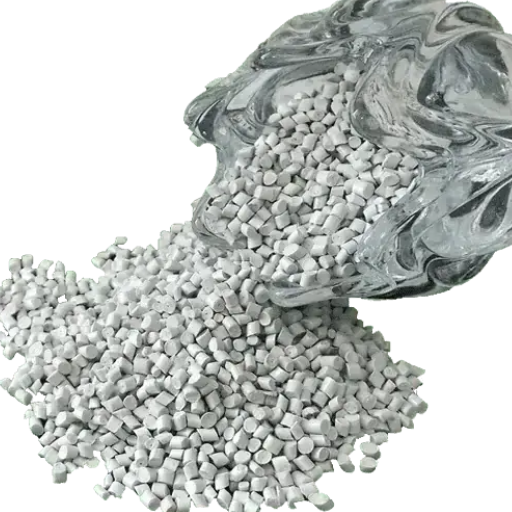
Proper packaging and storage of plastic pellets are crucial to maintaining their quality and preventing contamination. To begin, pellets should be stored in clean, sealed containers or bags made of moisture-resistant material to guard against humidity and dust. Temperature-controlled environments are ideal to prevent thermal degradation or deformation of the pellets. Additionally, keeping pellets off the ground and away from direct sunlight or other heat sources minimizes the risk of damage. Organizing storage areas with clear labeling systems ensures proper inventory management and reduces the likelihood of cross-contamination. Implementing these practices helps maintain consistent material performance and supports efficient production processes.
Proper storage techniques for maintaining pellet quality
Environmental Conditions for Pellet Storage
To maintain pellet quality, it is crucial to store them in a controlled environment with stable temperature and humidity levels. Excessive moisture can cause swelling, clumping, or spoilage of the pellets, while high temperatures may lead to thermal degradation or structural weakening. An ideal storage area is well-ventilated and kept at a relative humidity of less than 50%, ensuring the pellets stay dry and intact.
Storage Location and Organization
Pellets should be stored off the ground on pallets or in bins to prevent contact with moisture and contaminants. Utilizing covered storage solutions, such as silos or warehouses, provides additional protection from rain, sunlight, and other environmental factors. Labeling and segregating storage areas based on material type helps avoid mixing or cross-contamination, ensuring the integrity of distinct pellet batches.
Handling and Inspection Practices
During handling, care must be taken to minimize physical damage to the pellets caused by abrasion or crushing. Regularly inspecting storage facilities and equipment for signs of leaks, pests, or structural issues helps ensure optimal conditions are maintained. By adhering to these guidelines, manufacturers can preserve pellet quality and support consistent performance in their applications.
Packaging solutions for different types of plastic granules
Proper protective measures aid in preserving the quality and ease of use for plastic granules, which depend heavily on their packaging. Standardized bulk packaging techniques, such as woven polypropylene bags or flexible intermediate bulk containers (FIBCs), are both common and effective for grade polyethylene and polypropylene. These solutions provide moisture control, protect durability, and allow for efficient transport and storage.
More advanced protective measures are often needed for high-performance or specialty granules such as engineered plastics and biodegradable materials. Contamination or environmental degradation can be minimized with vacuum-sealed bags or airtight containers. Furthermore, protective faci boots help shield the granules from light exposure during formation or surgery.
In an effort to reduce their carbon footprints, many businesses now rely on eco-friendly packaging, which includes recyclable or reusable bags. It is clear that maintaining sustainable practices helps meet environmental goals; however, it is equally important to remain aligned with the company’s vision as well as customer expectations. Aiming to fulfill these goals enables companies to better tailor packaging to the type of granules plastic, allowing protection while reducing waste and ensuring effortless handling throughout the supply chain.
How can businesses integrate recycled plastic pellets into their production?
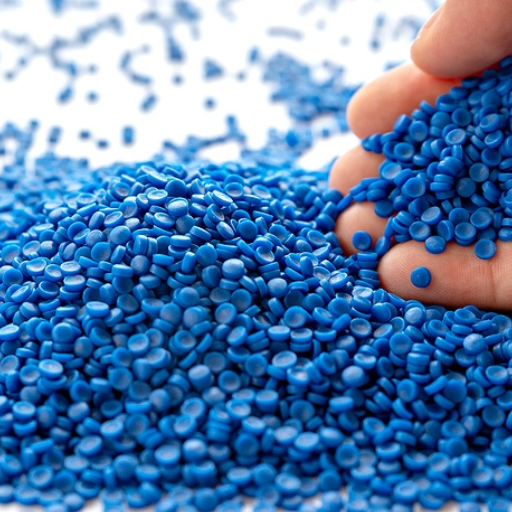
Businesses can integrate recycled plastic pellets into their production by first evaluating the compatibility of these materials with their existing manufacturing processes and product requirements. Conducting thorough material testing ensures the recycled pellets meet quality and safety standards. Companies can work with suppliers to source high-quality recycled plastics and establish a consistent supply chain. Additionally, businesses may need to invest in updated machinery or modify equipment to handle these materials effectively. Incorporating recycled pellets into blends with virgin plastics can also help maintain product performance while increasing sustainability. Regular monitoring and adjustments ensure seamless integration and optimal outcomes.
Adapting extrusion and injection molding processes for recycled materials
To successfully adapt extrusion and injection molding processes for recycled materials, several factors must be considered. First, ensure proper sorting and cleaning of recycled materials to remove contaminants that can impact processing and product quality. Pre-drying certain recycled plastics, like PET, prevents moisture-related defects, such as brittleness. Adjusting processing parameters, including melt temperature, injection pressure, and cooling time, is essential to accommodate the varying melt flow indices of recycled materials compared to virgin plastics.
Using additives or compatibilizers can enhance performance, improve bonding, and mitigate degradation issues often observed in recycled materials. It is also crucial to monitor material quality consistently to detect variations in recycling streams. Implementing these practices will help achieve optimal results while maintaining both functionality and sustainability in finished products.
Overcoming challenges in working with recycled plastic pellets
Understanding Material Variability
Recycled plastics often come from diverse sources, leading to inconsistencies in material properties such as color, melt flow rate, and contamination levels. To overcome this, comprehensive material testing prior to production can ensure that pellets meet required specifications. Advanced sorting technologies and specialized separation techniques can help reduce contaminants and improve feedstock purity.
Adjusting Processing Parameters
Recycled materials may behave differently during manufacturing compared to virgin plastics. Fine-tuning key parameters—such as melt temperature, injection speed, and pressure—can optimize processing efficiency and product quality. Utilizing real-time monitoring systems can provide the precision needed to adapt to these variations dynamically.
Enhancing Compatibility and Performance
Adding compatibilizers, stabilizers, or fillers can address challenges like poor bonding or degradation. For instance, coupling agents can improve the adhesion between different types of polymers, while antioxidants mitigate thermal or oxidative degradation during reprocessing.
Improving Product Consistency
Blending recycled materials with a controlled percentage of virgin plastic can enhance consistency and mechanical properties. This hybrid approach maintains product reliability while still achieving sustainability goals. Furthermore, implementing standardized processes for pellet preparation can reduce variability in the final output.
Investing in Quality Control Systems
Monitoring the quality of recycled pellets at each stage of production is critical. Advanced technologies like infrared spectroscopy and automated defect detection systems help ensure that only high-quality materials are used, minimizing production defects and material waste.
By addressing these challenges systematically, manufacturers can maximize the utility of recycled plastic pellets, fostering innovation while aligning with sustainability objectives.
Meeting industry standards with recycled plastic products
In order to integrate recycled plastic products into industry verticals, manufacturers must meet certain prerequisites. First, relevant laws and certifications such as ISO 14001 for environmental management, or FDA approval for food-grade materials, will need to be met. Compliance with the above criteria requires rigorous testing and traceability, which ensures the material’s claim of being recycled and its quality are accurate. Second, advanced purification, such as chemical recycling, is capable of removing contaminant enhancing material and guaranteeing the consistency of the end-product, allowing it to be applied to high-performance applications. Finally, the use of blended formulations also serves the purpose of integrating sustainability as the inclusion of reclaimed plastics alongside virgin polymers improves durability without compromising quality. These hybrid solutions are known to achieve compliance with demanding industry standards.
References
Frequently Asked Questions (FAQ)
Q: What are recycled plastic pellets?
A: Recycled plastic pellets are small pieces of plastic raw materials made from recycled plastics, such as low density polyethylene and polypropylene pellets, through a recycling process that involves melting and reshaping.
Q: What is the significance of using recycled plastic pellets in the plastics industry?
A: The plastics industry benefits from using recycled plastic pellets as they help reduce waste, lower production costs, and decrease the environmental impact of plastic production by reusing existing materials.
Q: How are recycled plastic pellets made?
A: Recycled plastic pellets are made through a recycling process that involves collecting used plastics, cleaning them, and then using an extruder to melt and form them into new pellets, such as mixed color ldpe pellets or natural hdpe pellets.
Q: What types of plastics can be turned into recycled plastic pellets?
A: Various types of plastics, including low density polyethylene, polypropylene, and high density polyethylene, can be turned into recycled plastic pellets and regrind for use in plastic injection and compression processes.
Q: How should I store recycled plastic pellets?
A: Proper storage of plastic granules is essential. They should be kept in a dry, cool environment to maintain the quality of the granules and prevent contamination.
Q: Are recycled plastic pellets suitable for all types of plastic production?
A: Recycled plastic pellets can meet specific requirements for many plastic production needs, such as making plastic containers and hard plastic products, but it is crucial to ensure they match the specific requirements of the intended application.
Q: How do recycled plastic pellets help with commercial recycling needs?
A: Recycled plastic pellets provide a sustainable solution for commercial recycling needs by enabling businesses to reduce waste and utilize resources efficiently while meeting environmental standards.
Q: What are the benefits of using polypropylene pellets in production?
A: Polypropylene pellets often come with benefits such as high durability, resistance to chemicals and temperature changes, making them ideal for a wide range of plastic production applications.
Q: Can recycled plastic pellets meet specific requirements for specialized products?
A: Yes, recycled plastic pellets can be customized to meet specific requirements for specialized products in various industries, ensuring high performance and sustainability.
Q: How can I get more information or assistance with recycled plastic pellets?
A: For more information or assistance regarding recycled plastic pellets and how they can meet your production needs, please contact us today. Our team is ready to assist you with your commercial recycling needs.

